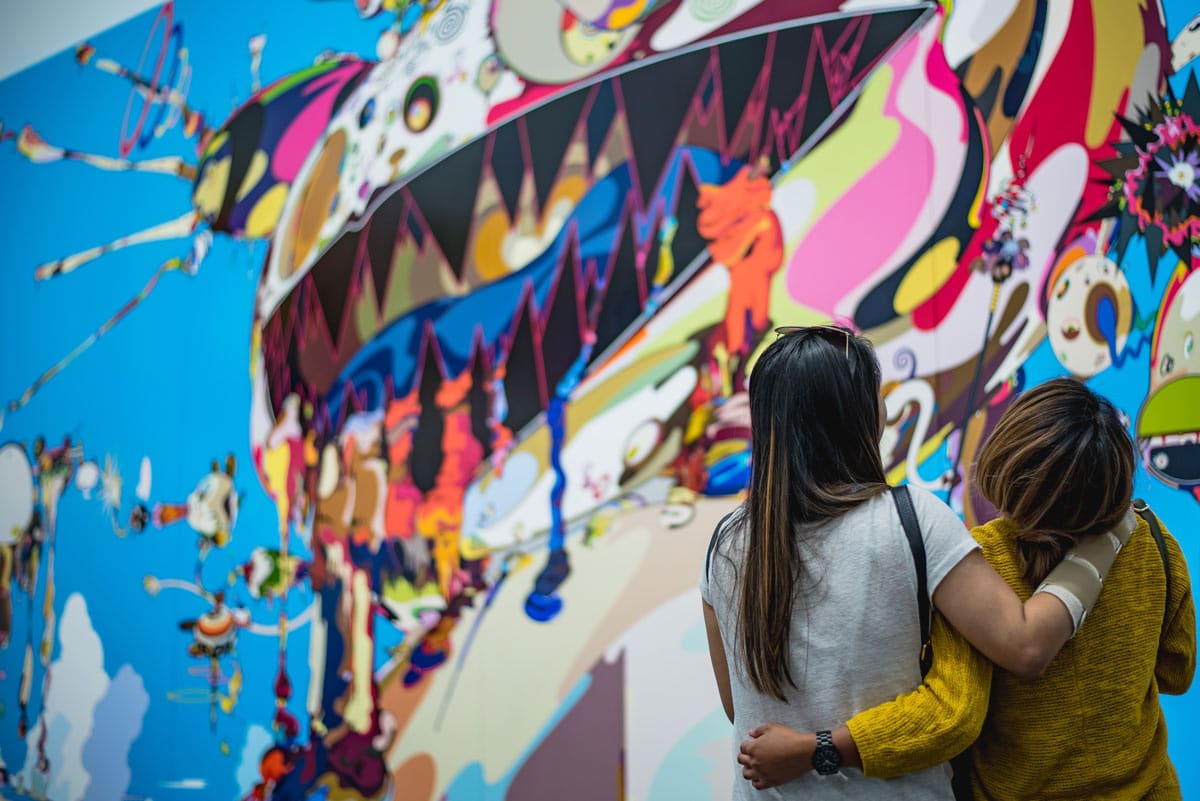A Takashi Murakami treasure hunt will start next weekend in Paris

Artwork by the world renowned Japanese contemporary artist Takashi Murakami is the treasure for 20 very lucky finders at the end of an art treasure hunt organised by the Perrotin Gallery in Paris in collaboration with the Grand Palais. Who is Takashi Murakami, and why is this possibly one of the most generous art scavenger hunts of all time?
Who is Takashi Murakami?
Murakami is a contemporary artist that draws inspiration from traditional Japanese painting, sci-fi, anime as well as the global art market in general, embodying the intersection between pop culture and history. The medium in which he works varies from painting to sculptures and film, which are populated by various characters of his own creation.
The artist earned a BA, MFA and a PhD from the Tokyo University of Arts, where he studied ‘nihonga’—meaning traditional Japanese painting. In 1996, he founded the Hiropon Factory, a studio and workshop which subsequently snowballed into an art production and artist management company, now known as Kaikai Kiki Co. Ltd.
Story is at the core of what drives many artists, and Murakami tells an incredibly rich one with his diverse set of independent characters that combine aspects of popular cartoons from Japan, Europe and the US. Mr. DOB, being his most famous, portrays a sharp-toothed yet playful character whose name derives from the Japanese slang phrase ‘dobojite’ or ‘why?’. Largely inspired by Walt Disney’s Mickey Mouse, Mr. Dob poses as a symbol that questions consumer society, as Murakami told Artsy, adding that the culture of consumer society to him seems lifeless and empty.
“I set out to investigate the secret of market survivability—the universality of characters such as Mickey Mouse, Sonic the Hedgehog, Doraemon, Miffy, Hello Kitty, and their knock-offs, produced in Hong Kong,” he said in a statement.
Murakami has established himself as a pioneer in promoting art as a brand. In 2007, the artist provided the cover artwork for rapper Kanye West’s album Graduation and also worked on an extremely popular collaboration with the fashion house Louis Vuitton. Other than this, the artist’s work has been the subject of countless exhibitions around the world, held in prestigious venues such as the Gagosian Gallery in London, the Guggenheim Museum in Bilbao and the Versailles Palace.
Just two original paintings from the series entitled And then, and then and then and then and then was sold by Phillips New York in 2010 as a set, for $2,000,000. His artwork only continues to rise and rise in value. Do we really need to go into why this much anticipated hunt has treasure to be found?
The Perrotin, Grand Palais treasure hunt
The Grand Palais des Champs-Élysées, commonly known as the Grand Palais, is a large historic site and exhibition hall as well as museum complex at the Champs-Élysées in Paris, France. It has teamed up with the Perrotin Gallery to create the project titled ‘Wanted!’—this is not any old project.
Wanted! is bound to be a tussle to the end between eager scavengers over 48 hours next weekend (24 to 25 October) and to participate in the hunt is free of charge. 20 artworks by Murakami will be hidden all over the Grand Palais for anyone interested in finding one. If you find a piece of art, it is yours to keep, no strings attached. If that seems too good to be true, then it gets even better.
Alongside Murakami, 19 other artists that are also represented by Perrotin Gallery, including the american contemporary artist Daniel Arsham, visual artist Emily Mae Smith and photographer JR will be scattered around the Grand Palais as well.
“The rules are simple,” reads an Instagram post by Perrotin: “20 artworks by Perrotin artists will be concealed in the empty nave of the Grand Palais. If you find one, you leave with it,” to which gallery owner Emmanuel Perrotin commented to The Art Newspaper that he is “hugely grateful to my artists for their commitment and belief in this wild project. This is a rare moment. I love the idea of doing this as a gift to the city of Paris, as a moment of solidarity and joy.”
The Grand Palais is set to close until next year for renovations, which makes the treasure hunt a must for those who adore what is one of the most unforgettable buildings in Paris, with not only that as an incentive, you may just walk away with some art, too. Good luck, and get searching!




